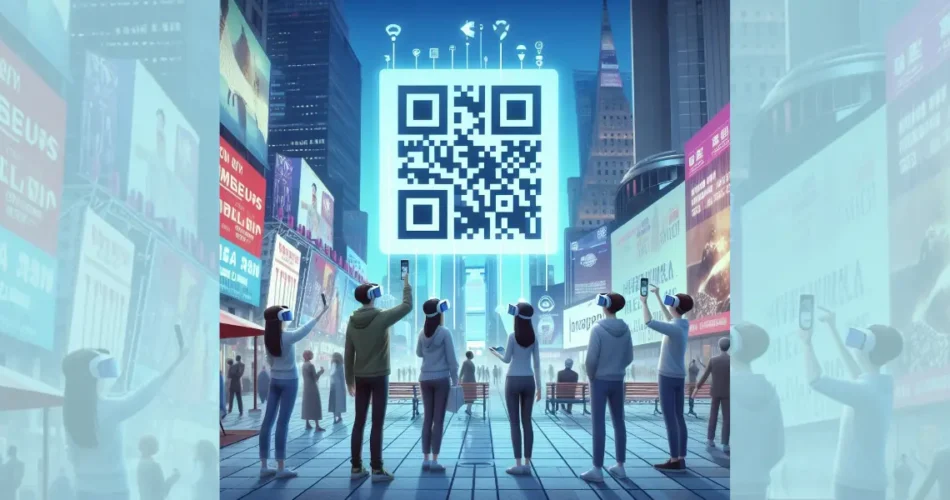In today’s ad-saturated world, grabbing and holding consumer attention is a constant battle.
Enter the QR Code, a simple yet powerful tool that can transform static advertisements into interactive experiences.
In this article, you will learn how QR Code Interactive advertising bridges the gap between print and digital, boosting engagement and driving results.
Keep reading!
A. What is a QR Code, and how does it work?
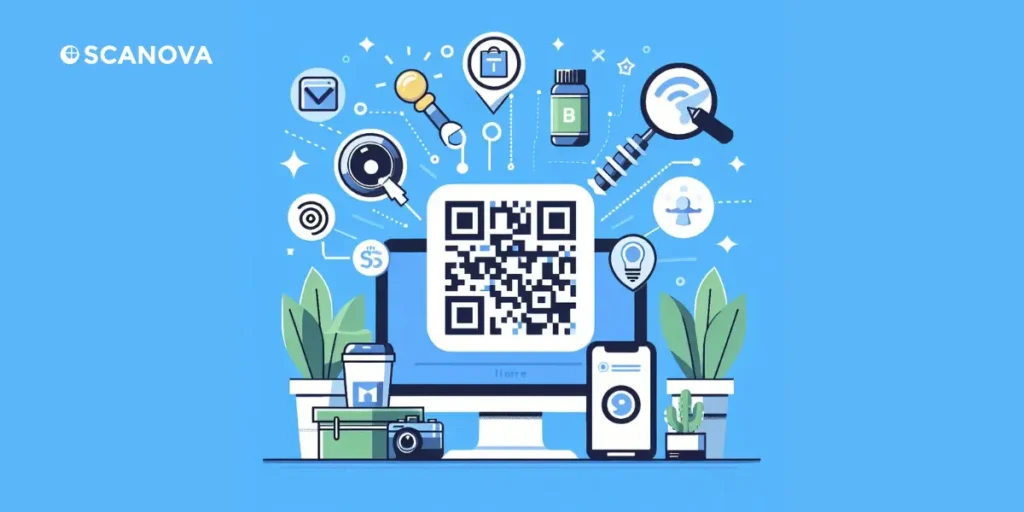
Imagine a barcode on steroids; that’s exactly what a QR Code is. A QR Code, short for Quick Response code, is a two-dimensional barcode that contains information readable by machines, usually smartphones or QR Code scanners.
When scanned by a smartphone camera, it whisks users away to a designated web page or video or even triggers an action.
Here’s how it works:
1. Encoding Information: A QR Code can store various types of data such as text, URLs, contact information, or other types of data.
When you create a QR Code, the desired information is encoded into a pattern of black squares arranged on a white square grid.
2. Scanning: To read the information encoded in a QR Code, you need a QR Code scanner.
Most modern smartphones come with built-in QR Code scanners in their camera apps. When you open the scanner and point it at a QR Code, it captures the image of the code.
3. Decoding: The QR Code scanner then processes the image and decodes the pattern of black and white squares into the encoded information.
Once decoded, the information can be displayed to the user or used by the device for various purposes.
4. Action: Depending on the type of information encoded in the QR Code, different actions can be taken.
For example, if the QR Code contains a URL, scanning it might open a web page in the smartphone’s browser. If it contains contact information, it might add a new contact to the device’s address book.
B. Rise of interactive advertisement
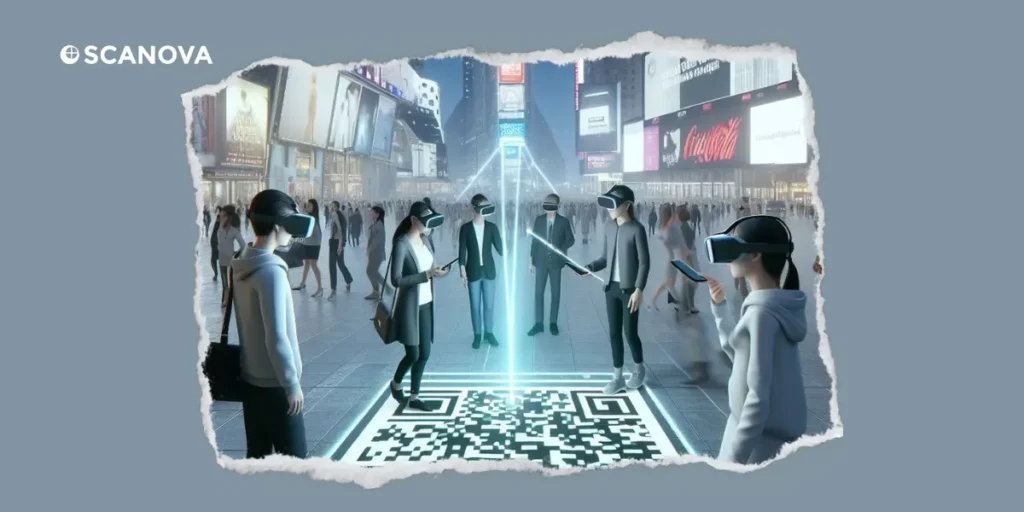
Interactive ads are becoming more popular nowadays. Instead of just showing you something, like a regular ad does, interactive ads let you do something, like play a game or try on virtual clothes.
You might see them on your phone or while browsing online. They’re cool because they feel more personal and fun.
Plus, companies can see if people like them and change them to make them better and more interactive using an ad maker.
Now, you’re probably wondering what the role of QR Codes is in the realm of interactive advertising. Well, QR Codes make ads interactive.
When you scan them with your phone, they take you to cool stuff online like videos or special deals. They help companies connect with you beyond just looking at an ad.
C. How can QR Codes help you in interactive advertising
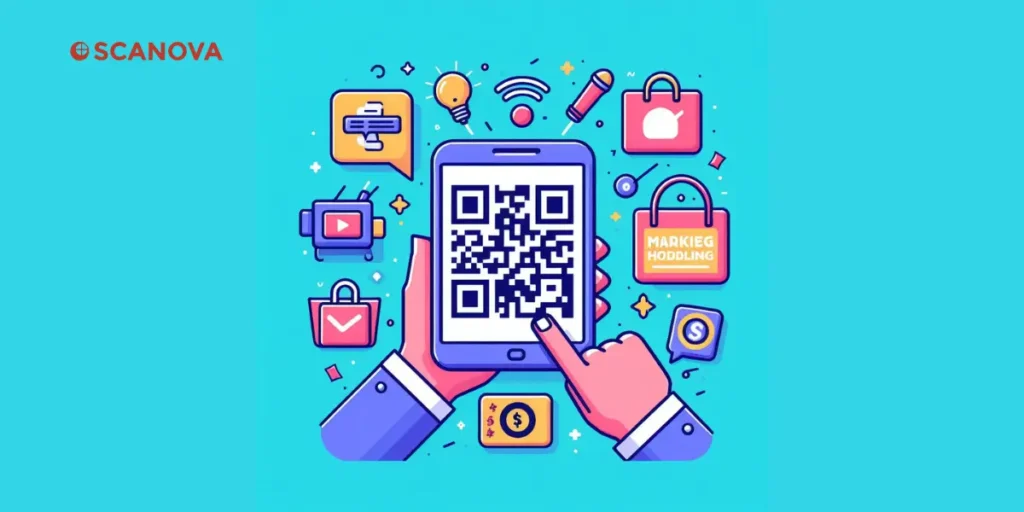
Here’s a list of all the ways QR Codes can be leveraged effectively in interactive advertising:
1. Engagement: QR Codes offer an interactive element to traditional advertising mediums such as posters, flyers, print ads, and product packaging.
By scanning the QR Code, consumers can access additional content such as videos, product information, special offers, or interactive experiences.
2. Mobile Integration: With the widespread use of smartphones, QR Codes provide a seamless way to bridge the gap between offline and online advertising.
Consumers can simply scan the QR Code using their smartphone camera, directing them to a specific landing page or digital experience.
3. Trackability: QR Codes can be easily tracked, providing valuable data to advertisers regarding the effectiveness of their campaigns.
Analytics can track metrics such as scan rates, user demographics, and conversion rates, allowing advertisers to optimize their strategies for better results.
4. Call-to-Action (CTA): QR Codes serve as a clear call-to-action for consumers, prompting them to take immediate action by scanning the code to access relevant content or offers.
Pro Tip: Including a compelling CTA alongside the QR Code can further encourage engagement.
5. Creativity: Advertisers can get creative with QR Code placements and designs to attract attention and enhance brand recognition.
QR Codes can be integrated into visually appealing designs or incorporated into interactive installations for a memorable consumer experience.
6. Incentives: Offering incentives such as discounts, exclusive content, or sweepstakes entries upon scanning the QR Code can incentivize consumers to engage with the advertising campaign.
7. Education and Information: QR Codes can be used to provide consumers with additional information about products, services, or promotions, helping to educate them and facilitate informed purchasing decisions.
8. Integration with Social Media: QR Codes can be linked to social media profiles or content, enabling consumers to easily follow brands on platforms like Instagram, Facebook, or Twitter directly from the advertising material.
9. Localized Campaigns: QR Codes can be used in localized advertising campaigns to provide consumers with location-specific offers or information based on their geographical location.
10. Accessibility: QR Codes offer accessibility benefits by providing an easy way for consumers to access digital content using their smartphones, regardless of physical limitations.


D. Why you should use QR Codes for interactive advertising?
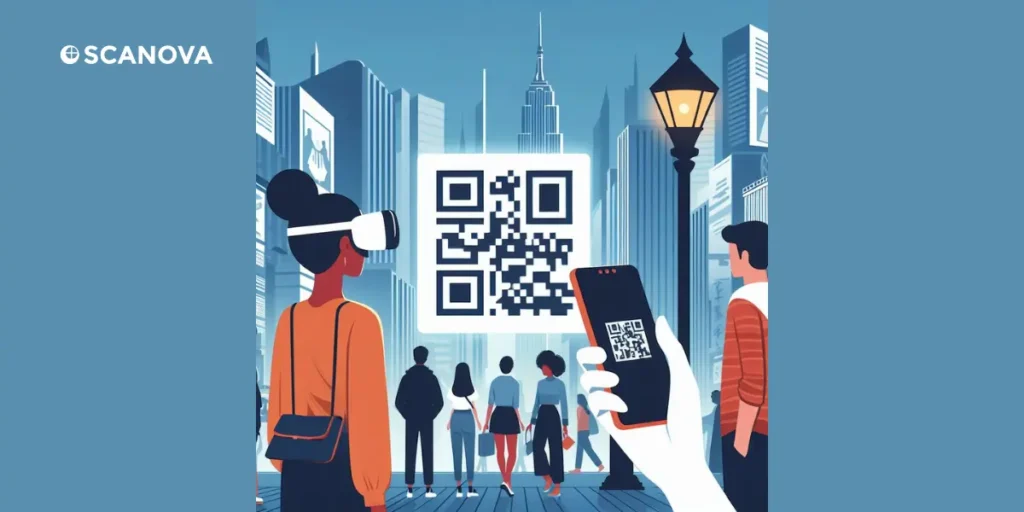
In advertising, the key metric to success is engagement. With QR Codes, advertisers fetch engagement rates much higher than those of traditional channels.
The median engagement rate with QR Codes stands at 5.9%, while the average is about 6.4%. This is higher than 4.4% for direct mail and 4.3% for catalogs.
Here’s why QR Codes are becoming a game-changer for advertisers:
1. Bridge the physical and digital divide
QR Codes seamlessly connect traditional print and outdoor advertising with the digital world.
Imagine a bus stop ad with a QR Code that takes you to a product demo or a magazine ad that unlocks exclusive content.
With QR Codes, you can actually bridge this gap between physical and digital advertising.
2. Boost engagement
QR Codes add an interactive layer to ads, transforming passive viewing into active participation.
This interactivity can be anything from gamified experiences to personalized content delivery.
3. Measurable results
QR Code analytics provide valuable insights into user behavior. Track how many scans your code receives, where those scans originate from, and what actions users take after scanning.
This allows you to refine your campaign and measure its effectiveness.
E. Real-life examples of QR Code interactive advertising
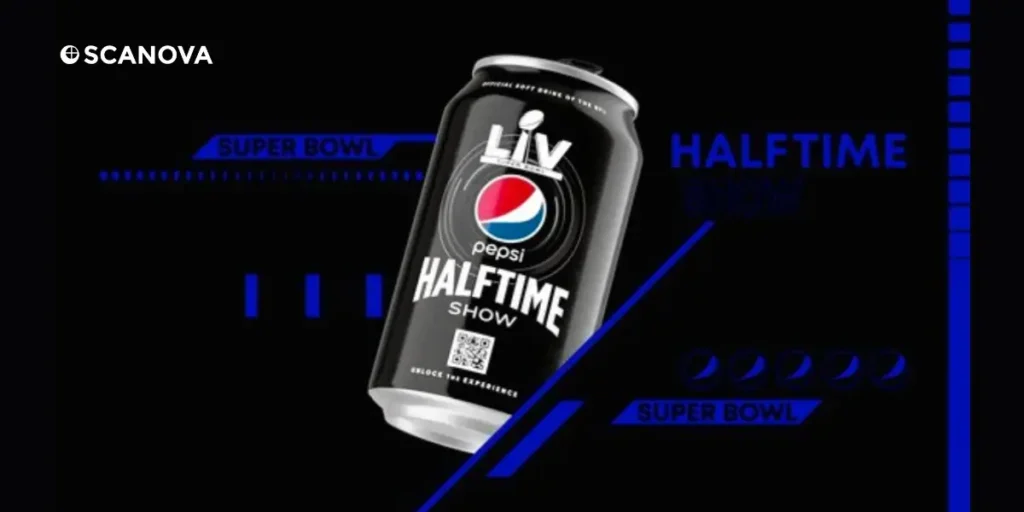
1. IKEA Place App
IKEA launched an AR QR Code campaign that allowed customers to visualize how furniture would look in their homes before purchasing.
Users could scan QR Codes on printed IKEA catalogs or in-store displays to virtually place furniture in their living spaces using the IKEA Place app.
2. Budweiser’s “Track Your Bud” Campaign
Budweiser utilized AR QR Codes on its packaging during the FIFA World Cup. Customers could scan the QR Code to track the journey of their beer from production to delivery, providing an interactive and informative experience.
3. NIVEA Sun “Care from the Air” Campaign
NIVEA implemented AR QR Codes on its sunscreen bottles, allowing users to scan the code and receive real-time UV index data for their location.
This campaign aimed to educate consumers about sun protection and promote the use of sunscreen.
4. L’Oreal’s Makeup Genius App
L’Oreal’s Makeup Genius app utilizes AR technology to enable users to virtually try on makeup products in real-time.
Customers could scan QR Codes in-store or in magazines to access the app and experiment with different makeup looks before making a purchase.
5. Converse’s “Chuck AR” Campaign
Converse introduced an AR QR Code campaign called “Chuck AR,” which allowed customers to interact with virtual versions of their iconic Chuck Taylor sneakers.
Users could scan QR Codes on Converse advertisements or in-store displays to see animated 3D models of the shoes.
6. Coca-Cola’s “Happiness Quest” Campaign
Coca-Cola launched an AR QR Code campaign in which customers could scan QR Codes on Coca-Cola cans to access an augmented reality game called “Happiness Quest.”
Players could navigate through a virtual world and complete challenges to spread happiness and win prizes.
F. Creative applications of QR Codes in interactive advertising
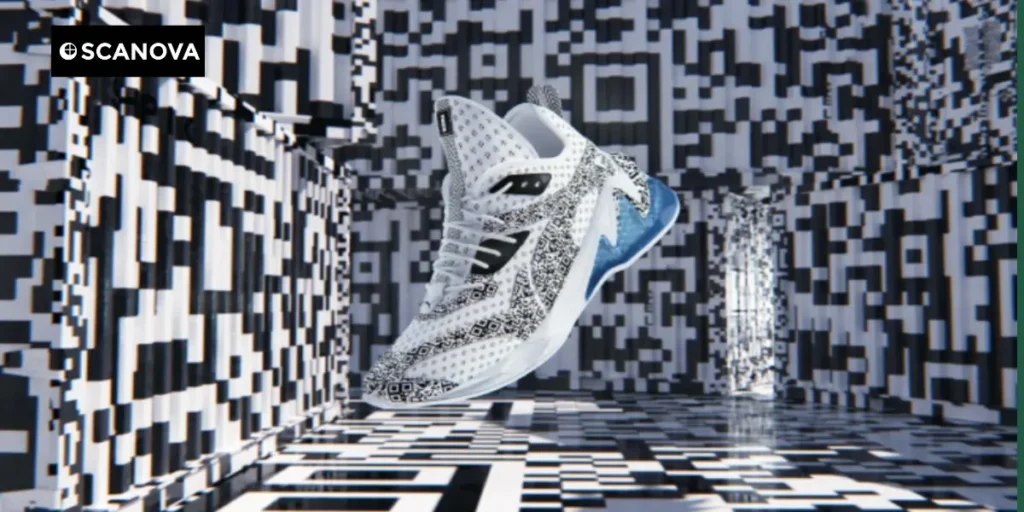
1. AR Product Visualization:
AR product visualization uses augmented reality technology to display virtual representations of products in real-world environments, allowing users to see how items would look and fit in their space before purchasing.
Users access the feature through retailer apps or websites, place virtual products in their environment using their device’s camera, and can explore, customize, and make more informed purchase decisions.
This technology is popular in industries like furniture, fashion, and home decor. This tech lets users virtually place furniture in their homes or try on clothes with AR-enabled QR Codes.
2. Interactive Games and Contests:
QR-based interactive games and contests use QR Codes to engage participants in interactive gaming or contest experiences.
Participants scan the QR Codes to access games or challenges, compete for prizes, and engage with the brand.
These campaigns encourage active participation, collect valuable data, and increase brand awareness and loyalty.
You can create QR Code-triggered games or contests to incentivize user engagement and brand recall.
3. Unlock Exclusive Content
This marketing technique grants users access to unique digital content not readily available elsewhere.
This content could include sneak peeks, behind-the-scenes footage, special promotions, early product launches, or downloadable coupons/assets.
The idea of accessing exclusive content incentivizes consumers to engage with the brand or campaign.
It fosters a sense of privilege and appreciation among users, as they feel rewarded for their interaction.
Moreover, this strategy enhances brand engagement by providing consumers with added value beyond the standard advertising materials.
4. Personalized Customer Journeys
When scanned, these QR Codes lead consumers to personalized content tailored to their preferences and behaviors.
This strategy enhances engagement and conversion rates while providing valuable data insights for brands.
Simply scan a QR Code to receive product recommendations or targeted promotions based on your preferences.
G. The future of interactive QR Code advertising
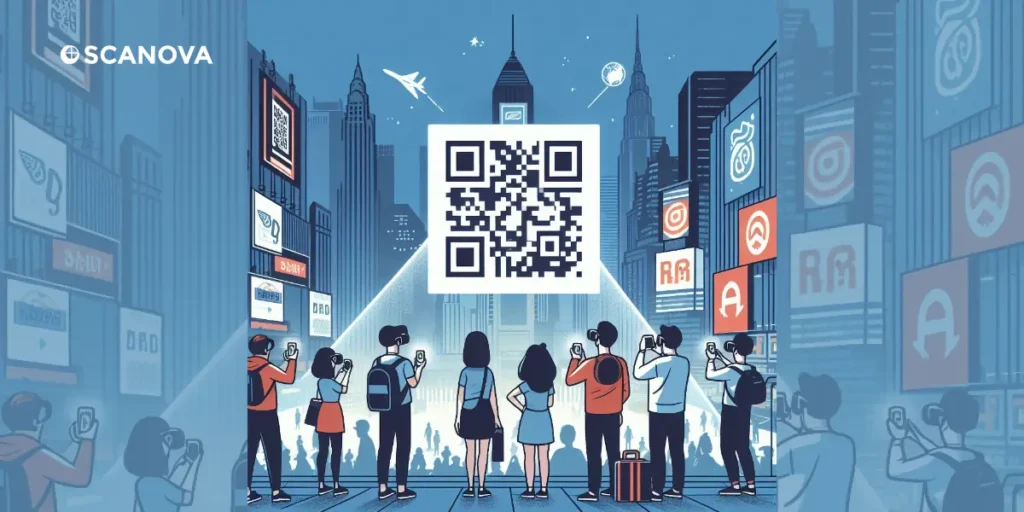
As technology evolves, so will QR Code capabilities. Expect to see:
- Smarter QR Codes: QR Codes that dynamically update content based on user location or demographics.
- Offline Interactions: QR Codes that trigger actions without an internet connection, like unlocking a discount at a physical store.
- Integration with AI and Machine Learning: QR Codes that personalize user experiences in real-time based on user data.


FAQs: QR Code Interactive Advertising

1. What is QR Code Interactive Advertising?
QR Code Interactive Advertising is a marketing strategy that utilizes QR Codes to engage consumers with interactive content, such as games, contests, product demos, or exclusive offers.
2. How does QR Code Interactive Advertising work?
QR Codes are placed on various marketing materials. Consumers scan these QR Codes using their smartphones to access interactive content tailored to the advertising campaign, enhancing their engagement with the brand.
3. What are the benefits of QR Code Interactive Advertising?
QR Code Interactive Advertising provides the following benefits:
- Enhanced brand engagement by providing interactive experiences,
- Drives consumer interaction with the brand
- Offers opportunities for data collection and analysis,
- increased conversions and sales.
4. What types of interactive experiences can QR Code Interactive Advertising offer?
QR Code Interactive Advertising can offer a variety of interactive experiences, including games, contests, virtual try-ons, product demonstrations, augmented reality experiences, and exclusive content access.
5. How can businesses implement QR Code Interactive Advertising effectively?
Businesses can implement QR Code Interactive Advertising effectively by ensuring clear call-to-actions, providing valuable and relevant interactive experiences, optimizing landing pages or digital destinations, and analyzing data to refine campaigns.
6. Are there any best practices for designing QR Codes in advertising materials?
Yes, some best practices include ensuring QR Codes are large enough to scan easily, placing them in prominent locations with clear instructions, testing QR Codes on various devices, and providing a compelling reason for consumers to scan them.
7. How can QR Code Interactive Advertising be used across different industries?
QR Code Interactive Advertising can be used across various industries such as retail, hospitality, tourism, education, healthcare, and more, to engage consumers, promote products or services, and enhance brand experiences.
8. What are some examples of successful QR Code Interactive Advertising campaigns?
Successful QR Code Interactive Advertising campaigns include interactive scavenger hunts, virtual product try-ons, gamified experiences, QR-based discounts or coupons, and interactive storytelling experiences.
9. How can businesses measure the effectiveness of their QR Code Interactive Advertising campaigns?
Businesses can measure effectiveness through metrics such as QR Code scans, engagement rates, conversion rates, time spent on interactive content, user feedback, and tracking conversions or sales generated from QR Code interactions.
10. Are there any privacy or security concerns associated with QR Code Interactive Advertising?
While QR Code Interactive Advertising itself doesn’t pose significant privacy or security risks, businesses should ensure that any data collected through QR Code interactions is handled securely and transparently, in compliance with relevant privacy regulations.
Conclusion
In conclusion, QR Codes offer a powerful way to transform static advertising into interactive experiences.
By bridging the physical and digital worlds, QR Codes can boost engagement, provide valuable data, and ultimately drive conversions.
So, the next time you see a QR Code, don’t just walk on by – scan it and discover a world of possibilities!
